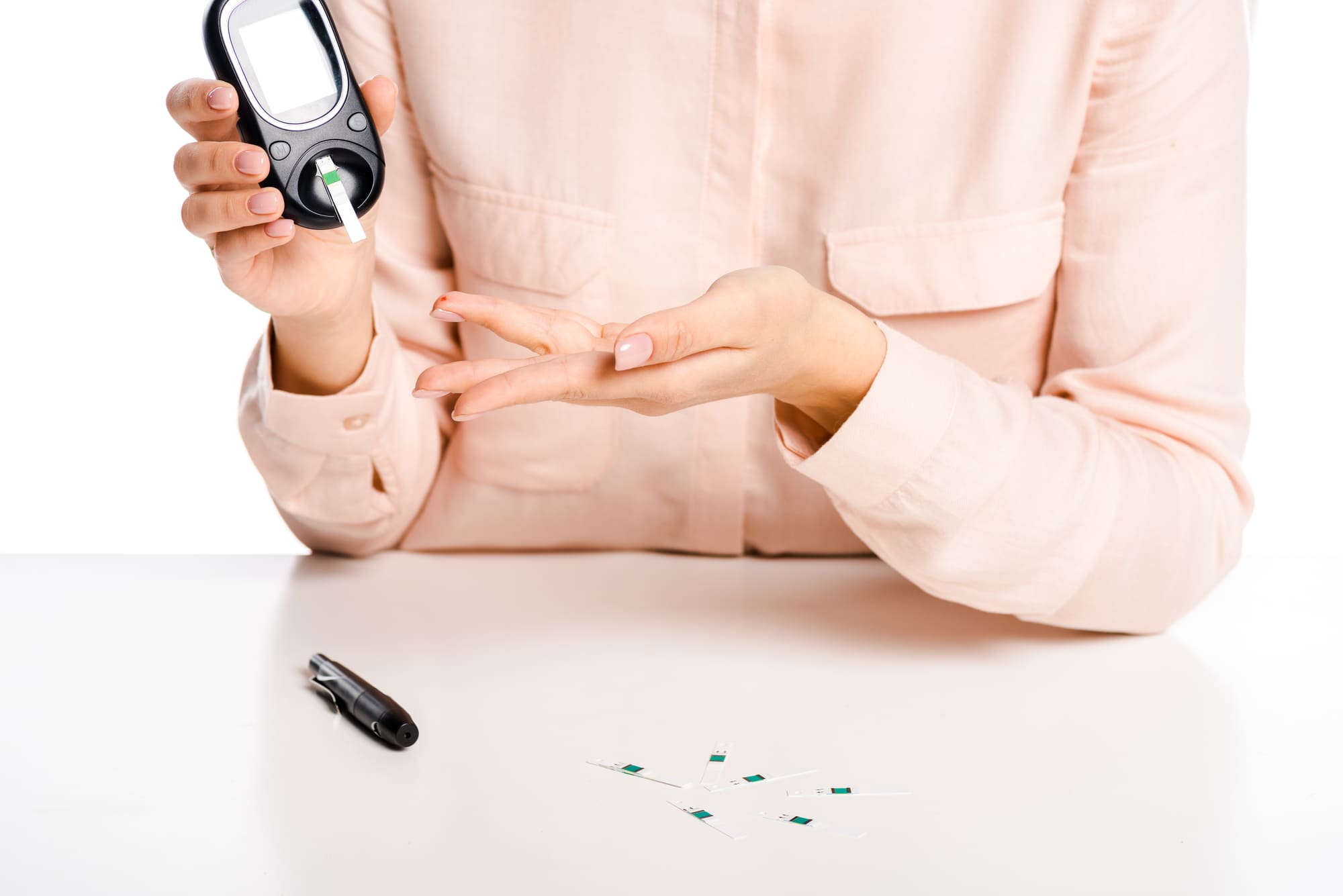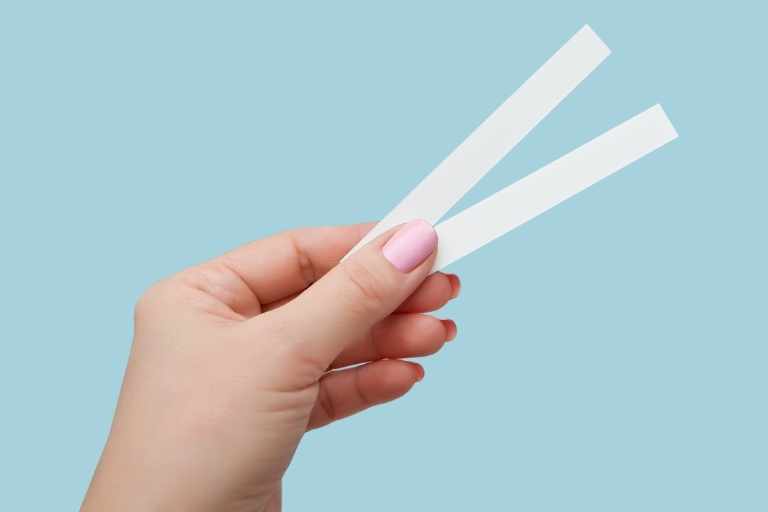A low-carb, high-fat keto diet, when done right, should enable the body to burn its stored fat and produce ketones. In the first few days or weeks of following the diet, people see a significant drop in water weight, followed by fat loss. But over time, they find themselves no longer progressing at the same rate.
What Is Keto Plateau?
If you stop losing weight like you used to while eating a low-carb keto diet, there’s a high chance that you’re experiencing keto plateau.
Plateaus can be frustrating experiences, but they’re an expected part of your weight loss journey. It happens to anyone regardless of their diet or fitness regimen. Some people plateau after a few weeks of starting the keto diet. For others, it may take around 6 months before it happens.
One thing we can all agree on is that maintaining weight loss for long periods is a challenge. A study mentioned that your biology, behaviors, social support, environment, and any existing medical conditions all play a role in weight loss management (1).
It’s no secret that a state of ketosis decreases hunger and makes your body more efficient in burning fat. However, it’s also possible to be in ketosis but not lose weight. If this is the case, it’s important to confirm that you really are in ketosis by testing your ketones and not just relying on symptoms.
If you’re sure that you’re in ketosis but the scale didn’t budge, you need to consider factors that may have led to your plateau. Keep reading below.
Why Keto Plateau Happens
The human body is pretty good at adapting to whatever changes it faces.
It adapts metabolically in response to weight loss and energy restriction, causing the body to decrease its energy expenditure and improve its metabolic efficiency (2)(3).
Simply put, your metabolism slows down in order to adapt to calorie restriction or eating too little. This explains why larger people burn more calories than light-weight people.
Here are more specific reasons that explain weight loss plateaus and actionable ways to break them.
Eating too much fat
The majority (55-60%) of your calories should come from fat when on a keto diet. But that doesn’t mean you can eat all the fat you want. Too much dietary fat contributes to excess calories and prevents your body from burning its stored fat.
What to do: The first step is to find out how much fat you’re really consuming. List down your sources of fat. This may include MCT oil, butter, dairy, and nuts. Next, find out your personal daily keto macro goals using a keto calculator. You might realize that you’re eating more than what you need to lose weight. Reduce your dietary fat if necessary and note any changes in your weight.
Hidden carbs
Carbs can sneak into your diet through both keto-friendly and non-keto-friendly foods. Foods that are not allowed on keto are obvious — they include starchy vegetables, traditional baked goods, and desserts.
But keto-friendly versions are trickier. Even low-carb versions of anything make you go over your limit if you’re not careful. These include almond flour, peanut butter, restaurant foods, milk alternatives, and packaged keto snacks.
What to do: Avoiding the carb creep starts by knowing your total carb intake for the day. If you’ve been doing keto for a long time now, you might need to recalculate your macros and find that your carb limit has changed. When shopping at the grocery, always check the nutrition label for the total carbs per serving. And as much as possible, cook your own food at home.
Eating too much protein
Like carbs and fats, too much dietary protein hampers weight loss. Excess amino acids get converted into glucose via gluconeogenesis. When glucose increases in the blood, ketone levels decrease. This puts you off ketosis (4)(5).
In most cases, a well-formulated keto diet requires a daily protein intake of 1.2 to 2.0 grams per kg reference body weight (6).
What to do: Determine your daily protein limit using a macro calculator. Stick to that limit. If possible, monitor your portions. That extra serving of meat, nuts, and eggs will easily add up to your total intake. Adding healthy fats into your diet, such as extra virgin olive oil or MCT oil will increase your satiety, reducing your food intake.
Making a habit out of snacking on keto treats
Low-carbohydrate, high-fat snacks keep hunger at bay before your next meal. Snacking on keto desserts can also help stabilize your blood glucose. However, snacking mindlessly on a daily basis, even on keto-friendly options, can be a way for carbs to creep in.
What to do: Listen to your body. Tune into your hunger cues. Do you really need to snack? Or are you, in reality, thirsty? If you need to snack, the best choices would be foods in their natural states such as hard-boiled eggs, bone broth, salad bites, and veggie sticks. If you want to minimize snacking, it’s important to eat proper nutrient-dense meals. Hunger can also result from a lack of vitamins and minerals in your diet.
Not fasting
Several research studies have shown the benefits of intermittent fasting. Intermittent fasting is a practice where an individual cycles between periods of eating and not eating. It reduces calorie consumption and forces the body to switch its energy source from glucose to ketones (7).
Aside from weight loss, intermittent fasting improves conditions such as diabetes and obesity (7).
What to do: There are different strategies to try, such as the 16/8 method in which you fast for 16 hours and eat up to 3 meals within 8 hours. Another is alternate-day fasting in which you fast every other day. This is a more advanced method. The most convenient is spontaneous meal skipping. To make intermittent fasting easier, make sure to stay preoccupied with other things and keep yourself well-hydrated. Don’t binge when it’s time to eat.
Alcohol
Alcohol consumption is a hot topic on a keto diet. One thing you should know is that alcohol doesn’t support your weight loss goals. A study also showed that alcohol consumption increases a person’s likelihood to consume junk foods (8).
Yet, like any other drink, there are low-carb versions of alcohol. Making the right choice and taking it in just the right amount will keep you in ketosis.
What to do: Keto-friendly alcoholic drinks include clear liquors (vodka, gin, whiskey, rum, tequila), dry white wines, and dry red wines. Meanwhile, stay away from sweet mixed drinks, sweet sparkling wines, and most beers since these options contain lots of carbs and sugar.
Chronic stress
You can fall out of ketosis because of too much stress. Chronic stress results from pressures at work, sick family members, violence, or financial difficulties. When under stress, your body releases cortisol into your bloodstream.
Cortisol then causes your blood glucose and insulin levels to increase. Their increase drives down ketone production (9).
What to do: Incorporate stress management into your daily life. Doing yoga, meditation, prayer, socialization, as well as finding a creative hobby all help. Another way to deal with stress healthily is to keep a positive attitude and learn to accept that there are things that are beyond your control.
Not tracking your calories
While strict caloric control isn’t a practice on a keto diet, calories still matter at the end of the day. You cannot eat as many cheeses and creams as you would like without gaining a few pounds.
To lose weight, a person needs to create a calorie deficit — burning more calories than you eat.
What to do: The best way to get started is to know how many calories you should consume per day. A keto macro calculator should help you figure this out. Log your meals, snacks, and drinks in a paper or online food journal. A calorie-tracking app is also a convenient tool for counting your calories no matter where you go.
Being sedentary
Exercise offers many benefits for those following a ketogenic diet. It depletes glycogen stores, putting you in ketosis (10). It prevents several chronic diseases such as diabetes, cancer, obesity, depression, and osteoporosis (11).
If you’re stuck in a keto weight loss plateau, one of the keto mistakes you could be making is a lack of physical activity. Are you getting enough of it?
What to do: Whether you’re at home or work, find opportunities to move your body more. Take the stairs. Park further away from the office. Get a standing desk if possible. Finally, adopt a workout routine. Identify the best time of the day where there are no distractions and you can focus on exercising only.
Undiagnosed medical condition
You could be doing the keto diet right, but you’re still not losing weight. You should be aware that there are medical conditions that hinder weight loss. These conditions include hypothyroidism, polycystic ovarian syndrome (PCOS), and Cushing’s syndrome. Certain medications also cause you to gain weight.
What to do: If you suspect that you have a health condition, consult your doctor right away. Make sure to mention your diet as well as the symptoms you’re experiencing.
Unrealistic weight loss expectations
You might not actually be in a plateau, but rather your expectations with weight loss are unrealistic. It’s not uncommon for dieters to aim for lofty goals, but keep in mind that every person’s weight loss experience is different. And as mentioned earlier, weight loss is easier at the start of a diet.
What to do: Aim for a healthy weight loss rate of 1 to 2 pounds per week. This is a realistic goal and will help you keep the weight off successfully long-term (12). If you weigh yourself often on the scale, know that the scale isn’t the best indicator for fat loss. Measuring body fat percentage is the best way to track your progress.
Eating too many processed foods
Processed foods often contain added sugars and saturated and trans fats. They promote inflammation in your body as well as increase your fasting blood glucose. Even foods that are marketed as “keto-friendly” can stall weight loss due to various additives.
What to do: Follow a keto diet that consists mainly of whole, natural foods. Whole foods contain more nutrients and fewer calories that support a healthy, fit body. Check out our complete keto shopping list for the best keto staples. For those with busy schedules, it helps to keep your pantry well-stocked and cook in bulk.
How Long Does a Keto Plateau Last?
A weight loss stall on keto can last a few weeks until you overcome it using the strategies we discussed. But do keep in mind that everyone is unique, which means that a person may start seeing results again sooner or later than expected. It’s essential to identify the reasons behind a plateau and that you confirm whether or not you’re really experiencing a stall.
Final Thoughts
Breaking a plateau on a keto diet starts by determining your personal macros. Next, consider the list of factors above such as the amount and quality of food you’re eating, your stress, activity, snacking habits, and weight loss expectations. Most importantly, visit your doctor if you suspect an underlying medical condition that’s preventing weight loss.
We hope these tips will help you get back on track as soon as possible.
References:
- Hall K, Kahan S. Maintenance of lost weight and long-term management of obesity. 2019 January 01
- Trexler E, Smith-Ryan A, Norton L. Metabolic adaptation to weight loss: implications for the athlete. 2014 February 27
- Hall K. Metabolic adaptations to weight loss. 2018 April 10
- Veldhorst M, Westerterp-Plantenga M, Westerterp K. Gluconeogenesis and energy expenditure after a high-protein, carbohydrate-free diet. 2009 July 29
- Fromentin C, Tomé D, Nau F et al. Dietary Proteins Contribute Little to Glucose Production, Even Under Optimal Gluconeogenic Conditions in Healthy Humans. 2013 April 16
- Phiney S, Volek J, Volk V. How Much Protein Do You Need In Nutritional Ketosis? 2018 February 21
- National Institute on Aging. Research on intermittent fasting shows health benefits. 2020 February 27
- Kruger J, Kruger D. The Impact of Alcohol Consumption on Food Choice Among College Students. 2015 January
- Thau L, Gandhi J, Sharma S. Physiology, Cortisol. 2022 August 29
- Ivy J. Regulation of Muscle Glycogen Repletion, Muscle Protein Synthesis and Repair Following Exercise. 2004 September 01
- Warburton D, Nicol C, Bredin S. Health benefits of physical activity: the evidence. 2006 March 14
- Centers for Disease Control and Prevention. Losing Weight. 2022 September 19



